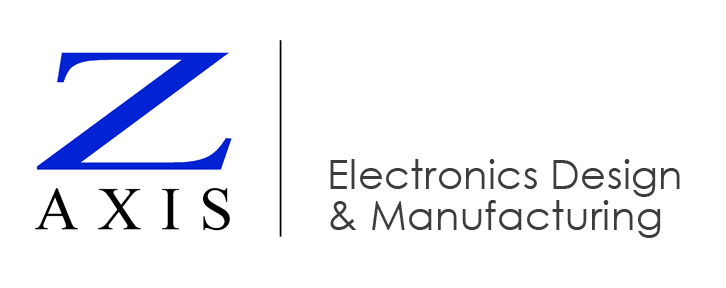Z-AXIS provides electronic circuit design and electronic contract manufacturing services. This video is the third in a three-part series, and it describes our mechanical design process. You’ll learn how board design and box design are interrelated.
SolidWorks, 3D Printing, and CNC Milling
Some customers already know how they want their boards to be packaged. Others don’t know everything about the box, or enclosure, that they need. Either way, Z-AXIS can help.
Our mechanical designers use Solid Works to develop your packaging. We can then use our high-quality 3D printer or our CNC mill to produce a prototype. Plastic is a good choice for prototype packaging because it’s cost-effective.
Using our CNC mill, we can machine a block of plastic and drill holes in it. As a result, you’ll get a sense of the physical package for your board. This complements your understanding of its electrical performance.
Enclosures, Board Shapes, and Testing
Boards need to fit within their enclosures, and rectangular boards have the least expensive shape. If you need other options, Z-AXIS can design and populate boards that are square, circular, or L-shaped instead.
We can also design boards with large holes or side notches to account for impingements. If you need an electro-mechanical assembly that includes a fan, we’ll design the packaging accordingly.
Testing is especially important. That’s why our design engineers can come up with a test plan that includes the use of test pads. Design for testing is part of the design for manufacturing, or DFM, help that we provide.
Fixtures and Mechanical Design
Z-AXIS can also produce the fixtures that are needed to put the test plan into action. The test fixture you see here readily makes electrical contact with the board by using what we call a bed of nails.
Burn-in fixtures are used to power up and power in under real-world conditions. Cables are connected to a dummy load and your product is run at an elevated temperature for a period of time.
Calibration fixtures are used with devices such as laser drivers. After calibrating a laser driver, the laser is aimed at an integrated sphere, run until it reaches the required brightness, and then set at the proper limit.
What’s Your Project?
This concludes our three-part series about electronic design at Z-AXIS. We hope you’ve enjoyed what you’ve learned, including how our electrical and mechanical engineers work closely together to support your electronic circuit design. Unlike other electronics manufacturing companies, we provide a rare combination of electronics design and electronic contract manufacturing.
